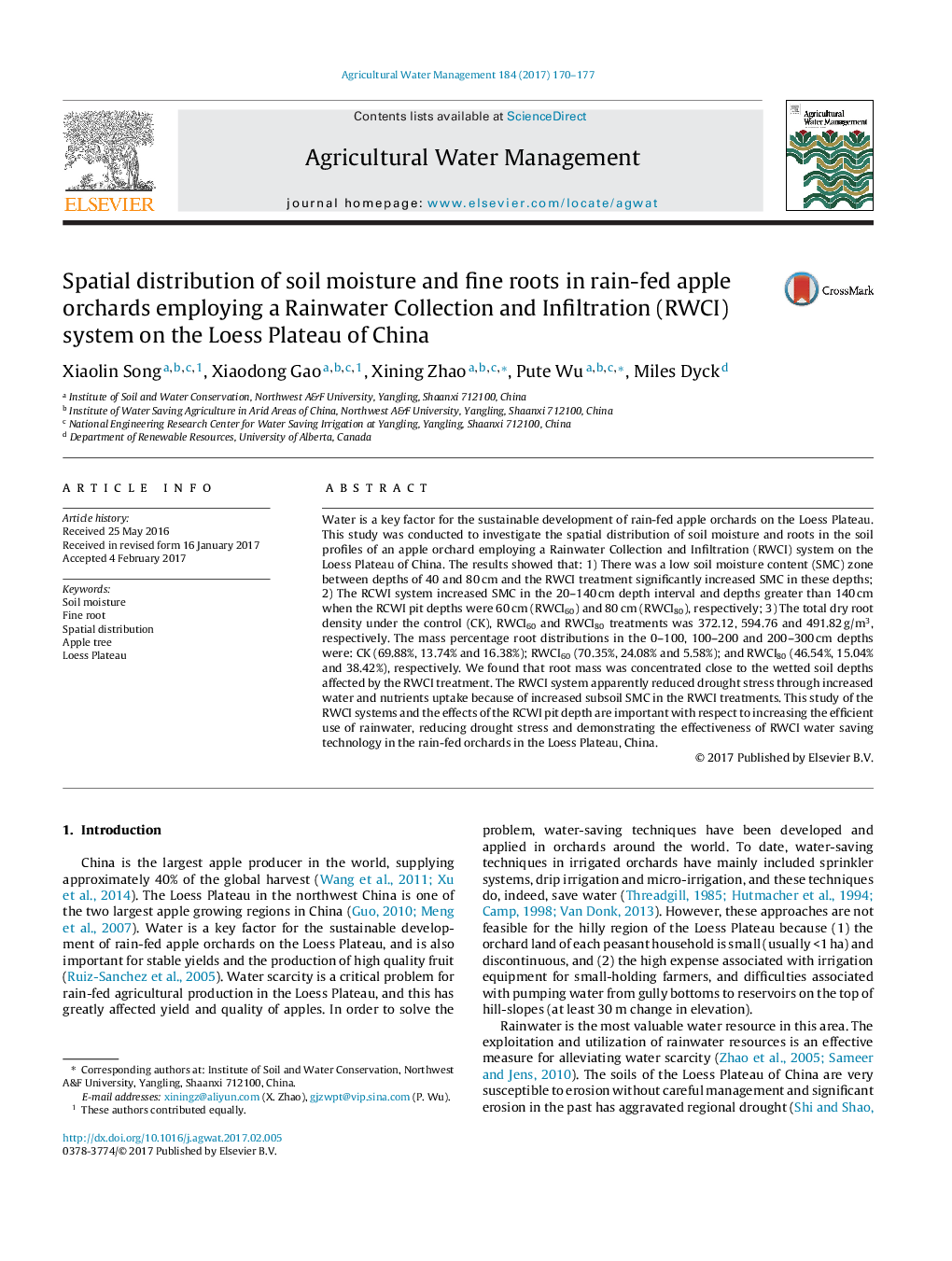| Article ID | Journal | Published Year | Pages | File Type |
|---|---|---|---|---|
| 5758394 | Agricultural Water Management | 2017 | 8 Pages |
Abstract
Water is a key factor for the sustainable development of rain-fed apple orchards on the Loess Plateau. This study was conducted to investigate the spatial distribution of soil moisture and roots in the soil profiles of an apple orchard employing a Rainwater Collection and Infiltration (RWCI) system on the Loess Plateau of China. The results showed that: 1) There was a low soil moisture content (SMC) zone between depths of 40 and 80Â cm and the RWCI treatment significantly increased SMC in these depths; 2) The RCWI system increased SMC in the 20-140Â cm depth interval and depths greater than 140Â cm when the RCWI pit depths were 60Â cm (RWCI60) and 80Â cm (RWCI80), respectively; 3) The total dry root density under the control (CK), RWCI60 and RWCI80 treatments was 372.12, 594.76 and 491.82Â g/m3, respectively. The mass percentage root distributions in the 0-100, 100-200 and 200-300Â cm depths were: CK (69.88%, 13.74% and 16.38%); RWCI60 (70.35%, 24.08% and 5.58%); and RWCI80 (46.54%, 15.04% and 38.42%), respectively. We found that root mass was concentrated close to the wetted soil depths affected by the RWCI treatment. The RWCI system apparently reduced drought stress through increased water and nutrients uptake because of increased subsoil SMC in the RWCI treatments. This study of the RWCI systems and the effects of the RCWI pit depth are important with respect to increasing the efficient use of rainwater, reducing drought stress and demonstrating the effectiveness of RWCI water saving technology in the rain-fed orchards in the Loess Plateau, China.
Related Topics
Life Sciences
Agricultural and Biological Sciences
Agronomy and Crop Science
Authors
Xiaolin Song, Xiaodong Gao, Xining Zhao, Pute Wu, Miles Dyck,
